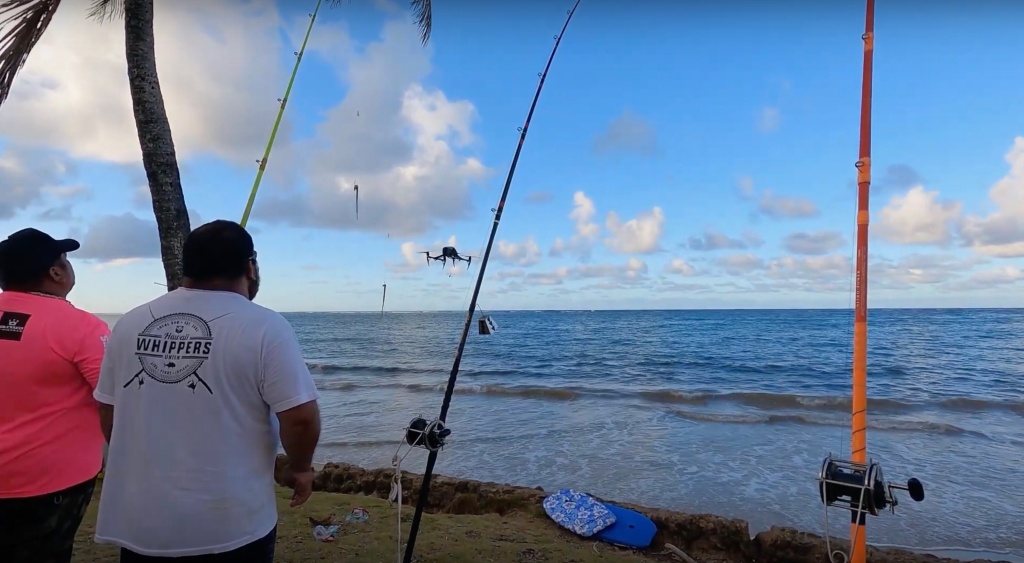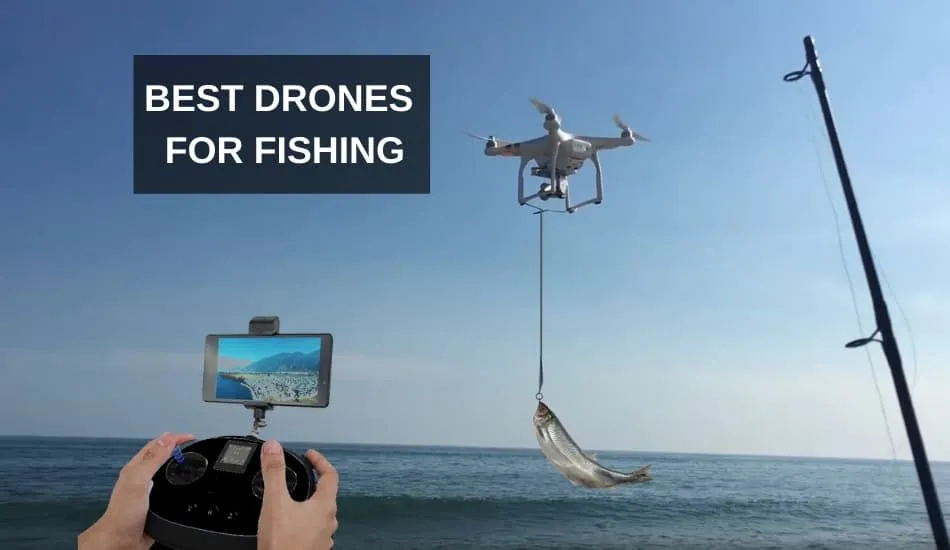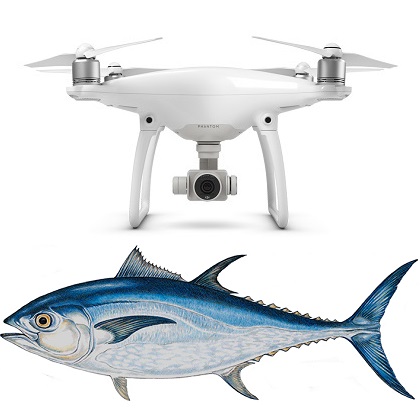
If you are a passionate fisherman, and you live in Australia you can use a drone for an aerial view of your property's waters. The drones can be equipped with a variety of features, including a GPS positioning system, a GPS receiver, a GPS receiver, a GPS payload release, and an angle adjustable camera. There are also fishing lines available that can be used for fishing. They are very stable and secure. One example is the SKY RIGGER drone.
SKY RIGGER, a drone fishing line, is available
The SKY RIGGER fishing line system for drones allows you fly fish and is flexible. The system has two rotating leg clamps that can be mounted on a wide variety of drone models. The release mechanism is designed with a bayonet-style connection and a cam-lock arm to open the line clamps quickly. Sky RIGGER doesn't require batteries unlike other drones. This drone can take all kinds of fishing techniques and is safe.
The SKY RIGGER's automatic release mechanism allows for the release of the fly when a fish strikes it. You can also manually let go of the line by using your rod or hand. This feature is included on all models. It is recommended that you purchase a Phantom 3 before purchasing the new SKY RIGGER. Here are some pros & cons of the new line.
It comes with a mechanical payload.
A good drone's mechanical payload release is one of its most important characteristics. Many of them make it possible for the anglers easy to release the fishing lines. However, some models do not have a release mechanism. Instead, users must "yank the fishing line" to free the drone. This can be frustrating, especially for people who aren’t comfortable using their fingers to release the line.

A payload release mechanism is also an important feature. Payloads should be capable of releasing the drone's line once the fish has been caught. Catch and release fishing is a skill that should be practiced before you attempt it. The DJI Phantom drone has been reported to have excellent results by many people. However, this technology has not yet reached the level of fishing drones that are available on the market.
It features a GPS positioning device
Rippton is a joint venture of Australia and Holland that specializes exclusively in technology-oriented fishing gear. It was established to help anglers improve their success rates and create products that will enhance the enjoyment of fishing. Rippton's Mobula drone has a GPS positioning system as well as a remote release. The Mobula is able to hold bait on the surface, resist kite clips and is environmentally friendly.
It is lightweight and weighs just 3 lbs. It can fly for up 18 minutes. It is also equipped with a high-tech GPS system that allows it to control it from up to 2,000 yards away. It is capable of flying at 1000 meters (or half a kilometer) range and has intelligent flight modes. Its point-of-interest feature allows it to capture high quality images of its surroundings. You can enjoy stunning views of fish through its high-resolution lens.
It features a failsafe function
The Aerokontiki fisherman drone comes with a failsafe feature: it monitors the battery level and releases the fishing line when needed. It will return to dry land if the battery runs out and continue its mission. It operates with industrial-grade flightcontrollers, and it can work anywhere without requiring calibration. This drone is also waterproof, so you can use it even in the most difficult water spots.

FAQ
Can I fly my drone around my area?
Yes! These are known as UAVs (unmanned air vehicles). There are many options for drones, from small quadcopters to larger fixed-wing aircraft. The FAA recently updated its rules regarding commercial UAV use. You can now legally fly them to business purposes. Be aware that UAVs operating near airports could cause interference to air traffic control systems. You must get permission from the authorities before you can fly one.
Is it possible to fly a helicopter while driving?
Driving a drone is dangerous, as it could cause an accident or crash into another vehicle. Additionally, you may hit pedestrians or animals. You could also damage your car if you hit power lines, trees, or other buildings.
How do you travel with a drone?
Drones are becoming more and more popular for personal and professional use. They are used for video, filming aerial mapping, search &rescue, and many other purposes. A number of new regulations have been approved by the FAA for drones. These include registration, licensing, pilot training and insurance. These changes will help ensure that drones remain safe for everyone involved.
Is it necessary to have special training in order to fly a drone
To fly your drone, you don't have to be an expert in flight mechanics. You just need a remote-control unit and basic knowledge in flight mechanics.
Is it possible to fly a drone at high altitudes without a license?
There is no restriction on the height at which you can fly a drone according to the FAA. You will need to register your unmanned aircraft system (UAS), including the registration number and model name, weight, dimensions, serial number, manufacturer's number, date manufactured, and any other information.
What is the difference of a quadcopter and an hexacopter, you ask?
A quadcopter can be described as a quadrotor helicopter with four rotors. It flies the same way as a traditional helicopter. It has four rotors which rotate independently. The hexacopter can be described as a quadcopter but has six rotors, instead of the usual four. Hexacopters are more stable and maneuverable than quadcopters.
Can I fly my drone at my local park?
Yes, you can fly drones at parks all around the world. Due to safety concerns, certain countries don't allow you to fly drones in parks. Take a look at our list of legal places to fly drones for entertainment.
Statistics
- According to industry research from ZipRecruiter , there are 10 cities where the typical salary for a Drone Pilot job is above the national average. (dronesgator.com)
- With the top 10% making over $100/h and the bottom 10% making as low as $10/h. (dronesgator.com)
- According to the multiple listing service (MLS), houses and apartments with drone photographs are up to 68 percent more likely to sell than those without pictures. (thedroneu.com)
External Links
How To
How to Fly Drones with Beginners
A drone is a remote-controlled aircraft used for aerial photography, cinematography, surveillance, scientific research, and hobby purposes. Drone technology has existed since World War II. DJI's Phantom series quadcopters were first commercially available in 2010. Since then, there have been many different types of drones available, from beginner-friendly models like the Parrot AR Drone 2.0 to professional-grade multi-rotor craft like the DJI Mavic Pro.
There are several ways to fly a drone, including;
-
Remote control - This method uses a control device attached to your hand, which enables you to steer the drone through its flight path. There are two main types for controllers: Joysticks or On/Off switches, which can be used to control the drone's flight path.
-
Manual Control – This method lets users remotely control the drone by using a smartphone app. Follow the instructions of the app to track the exact location you want the drone go.
-
Autonomous flight - The drone takes over the piloting duties. It is basically flying autonomously and without human intervention. For the autonomous flight to occur, the drone must have a built-in camera and sensors capable of capturing images and data.
-
Triggered Flying - This method works in the same way as manual control. However, the pilot has to manually set up a route for the drone and it follows that route until reaching the endpoint. After the preprogrammed route is complete, the drone will automatically land and return to its base.
-
Landing Gear – Some drones are equipped with landing gear, which allows them to safely land if they lose power during flight.
-
Goggles – Pilots often wear goggles while flying to keep themselves safe from any debris.
-
Camera – Some drones have cameras, which allow you to take photos or videos from up high.
-
Obstacles: Some drones are equipped with obstacle avoidance systems to prevent them from hitting obstacles.
-
Speed - Drones can reach speeds up to 40 mph.
-
Battery Life – Most drones will last 20 minutes to three hours depending on how powerful they are.
-
Distance - Some drones can travel up 30 miles depending on the model.
-
Power source – Some drones require external power sources, others require internal batteries.
-
Weight - Some drones have a weight of less than 1 pound and others weigh 4 lbs.
-
Size - Drones range from small devices that fit in one's palm to large crafts that weigh more than 50 pounds.
-
Price - High-end drones can go for thousands of dollars, while low-cost models start at $100.